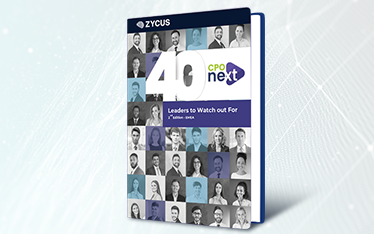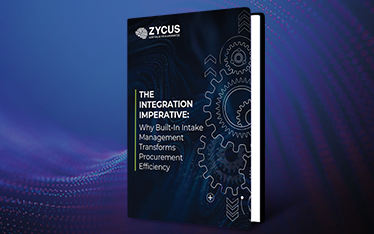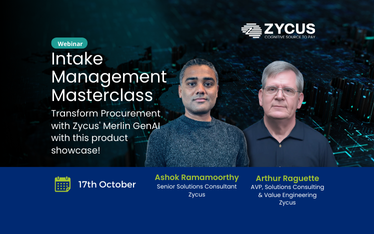We find ourselves navigating a period of heightened uncertainty. A few years ago, the world grappled with a pandemic, and more recently, global geopolitical events have added to the disruption of supply chains. These disruptions are compounded by factors such as climate change, economic recessions, rising fuel costs, labor shortages, and stringent regulatory requirements. To address these challenges, companies must adopt supply chain best practices, including supplier risk management, to safeguard their supply chains and ensure business continuity.
These factors result in increased costs, project delays, harm to a company’s reputation, and more. As a result, businesses around the world are placing a strong emphasis on and investing in supplier risk management.
It’s not that procurement teams are oblivious to these supplier-related risks or aren’t actively monitoring them. However, the challenge lies in the absence of a cohesive system for tracking suppliers, which often leads to procurement teams identifying these risks too late, by which point the damage is already done. What enterprises truly need is a robust, technology-driven supplier risk management solution.
In this blog, we will explore the significance of risk management for businesses and share Top 10 supplier risk management best practices for procurement professionals.
Why is Supplier Risk Management Important?
Long and complex supply chains, digitization, cyber-security threats, dependence on third-party suppliers collectively increase the risk exposure for a business in today’s landscape.
Some of the most common risks associated with suppliers include:
- Supply chain disruptions
- Quality issues
- Discontinued supply of essential goods
- Product recall
- Financial & legal frauds
These risks can put your business operations and reputation in jeopardy. This is where comprehensive supplier risk management software come in handy, helping a business identify, assess, and mitigate potential supplier risks before they occur. Given the highly volatile world we live in today, one can’t undermine the imperative of effective supplier risk management.
We have listed below 10 supplier risk management best practices that can help you in effective supplier management, enabling not only cost optimization but a plethora of other benefits such as elevated business productivity.
Top 10 Supplier Risk Management Best Practices You Must Follow
1. Shared Dashboard for Supplier Information and Profiling
Keeping a comprehensive database of your suppliers is the first step. Without a database of verified suppliers you will not know whom to assess and manage and therefore not know the extent of risks involved. You will also need to profile the vendors on various parameters such as how critical they are to your business, the industry they work in, demographics, size, dependence on third-parties etc.
This will help you identify the extent to which a supplier can impact your business operations. All suppliers may not require the same level of risk assessment efforts. You can profile suppliers under five risk categories:
- Negligible risk
- Low risk
- Medium risk
- High risk
- Extreme risk
2. Due Diligence and Risk Assessment
When onboarding a new supplier, proper due diligence is non-negotiable. This includes a thorough background verification, checking their financial health, company formation papers, adherence to legal and regulatory compliances, and credit score in the market at the time of onboarding.
Additionally, conducting a supplier risk assessment using a scoring method, questionnaire, or a combination of both will help you measure the risk associated with doing business with a particular supplier. These steps align with supply chain management best practices to ensure a resilient and reliable supplier network.
Read our blog on: Know about what factors to consider when conducting supplier risk assessment.
3. Periodic Audits
Doing regular supplier audits and internal accounts audits can help you identify any potential frauds early. Incidents like wrong invoicing, overbilling, duplicate invoicing can be traced and necessary action can be taken well in time.
4. Continuous Monitoring
Due diligence and risk assessment are not a one-time activity, it is an ongoing process. Company policies change, management changes happen, financial and legal regulations change – all of these may impact your business and the risk level involved in conducting business with a certain supplier.
Read our blog on why organizations must have robust supplier risk assessment operations to safeguard them from unforeseen internal and external events : Tech-Enabled Supplier Risk Assessment: Unlocking Cost and Time Savings
Continuous monitoring of suppliers is therefore imperative to safeguard your business against any potential risks. For example, Zycus AI-enabled Merlin for Risk continuously monitors risks data and identifies impacted suppliers in real time.
5. Include Risk Mitigating Clause in Contracts
When drafting a supplier contract include a penalty-clause for delay in deliveries, non-compliance, quality issues, incomplete paper work etc. Also, include conditions under which the said contract can be terminated.
6. Performance Based Contracts
Keep a tab on the key performance indicators (KPIs) of a supplier. When listing payment terms and conditions you can design a payment schedule based on KPIs achieved. A clause like added incentives for consistent quality and on-time delivery can minimize business risk and ensure less delays and process breakdowns.
7. A Large Pool of Suppliers to Ensure Business Continuity
Always have more than one supplier, as relying solely on one supplier for procurement of a particular commodity is certainly not the way to go.
8. Use of Technology
Businesses are undergoing a digital transformation in procurement to achieve a more effective way of buying things. This involves implementing proven digital tools and cutting-edge Procurement 4.0 technologies. Invest in a comprehensive procurement solution such as Zycus for efficient supplier risk management.
9. Business Continuity Plan
Natural calamities, geopolitical tensions, non-compliance of regulations by a supplier can disrupt your business operation and lead to unnecessary delays. It is therefore imperative to have an incident report plan and business continuity plan in place. A process to remove suppliers that fail to mitigate risks is important.
10. Clear Channel of Communication
Communicating regularly with your suppliers on any minor incidents or issues can avoid bigger problems in the future. Also setting clear expectations on what you expect, updating all stakeholders informed about your supplier management processes and policies go a long way in ensuring smooth and streamlined operations.
Technology is transforming the modern business landscape, procurement is no exception. An effective way to combat potential supplier threats and effectively manage supplier risk is by harnessing the capabilities of an AI-driven intuitive supplier risk management tool such as Zycus Merlin Assist. AI can play an instrumental role in identifying potential risk hazards, provide real-time insights, and enable proactive mitigation of risks.
Try Zycus Merlin for Risk for Effective Supplier Risk Management
With Zycus Merlin for Risk enables you to stay ahead of the curve by identifying, analyzing, and mitigating risks before they become a potential business hazard.
- Risk Profiling: Suppliers both existing and new are thoroughly examined against various parameters and profiled according to the risk level attached to them.
- Birds Eye View of Risk: A holistic view of risks, including financial risks, operational risks, non-compliance issues, and geopolitical elements.
- Continuous Monitoring: The Merlin AI continuously monitors various risk sources and data online, identifies impacted suppliers, risk sources, and shows the risk score.
- Auto-alerts: Auto-alerts for high-risk suppliers ensures timely corrective action.
Work closely with suppliers to mitigate risks in a pro-active way rather than a reactive way. Take control of your supplier risk management with Merlin AI. Request a demo today!
Related Reads:
- Supplier Management–Benefits, Process, & Best Practices
- A 5-Step Process to Effective Supplier Management
- Your Step-by-Step Roadmap to the Supplier Risk Management Process
- A Comprehensive Guide to Supplier Risk Management
- White-Paper – Supplier Management Automation
- Research-Report – Taking a 360° Approach to Supplier Management
- Solution: End-to-End Supplier Risk Management Software Powered by GenAI









